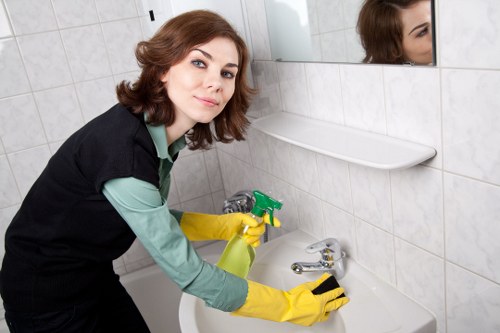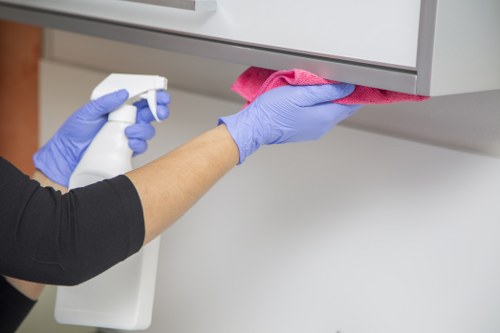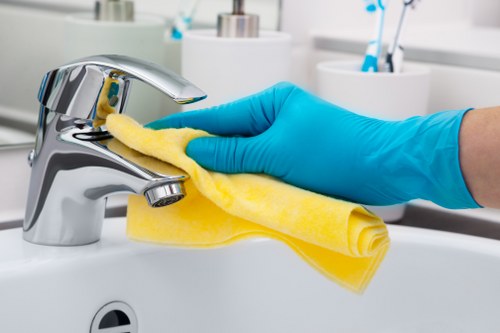Hard Floor Cleaning in Oven Cleaning

Maintaining a clean oven is essential not only for the longevity of your appliance but also for the health and safety of your household. **Hard floor cleaning in oven cleaning** plays a pivotal role in ensuring that your oven remains free from grime, grease, and harmful residues. This comprehensive guide will walk you through effective techniques and tips to achieve a spotless oven, making your cooking experience more enjoyable and hygienic.
Ovens are one of the most frequently used appliances in the kitchen, and with regular use comes the accumulation of spills and splatters. Over time, these residues can harden, making them challenging to remove. Ignoring these buildups can lead to unpleasant odors, smoke during cooking, and even potential fire hazards. Therefore, incorporating hard floor cleaning practices into your oven maintenance routine is crucial.
In this article, we will explore various methods for hard floor cleaning in oven cleaning, including natural cleaning solutions, commercial products, and preventive measures. By the end of this guide, you'll be equipped with the knowledge to keep your oven sparkling clean with minimal effort.
The Importance of Regular Oven Cleaning

Regular oven cleaning is vital for several reasons. First and foremost, a clean oven ensures that your food tastes its best. Residues from previous cooking sessions can impart unwanted flavors to your meals. Additionally, a clean oven operates more efficiently, reducing energy consumption and extending the appliance's lifespan.
Moreover, accumulated grease and food particles can pose significant safety risks. These residues can catch fire if exposed to high temperatures, leading to dangerous situations in your kitchen. By maintaining a clean oven through hard floor cleaning, you mitigate these risks and create a safer cooking environment for your family.
Another compelling reason to prioritize oven cleaning is the prevention of unpleasant odors. The buildup of food particles and grease can emit foul smells, especially when heated. Regular cleaning eliminates these sources of odors, ensuring that your kitchen remains fresh and inviting.
Benefits of Using Proper Cleaning Techniques

Employing the right cleaning techniques for hard floor cleaning in oven cleaning offers numerous benefits. Proper methods ensure that all stubborn stains and residues are effectively removed without damaging the oven's surfaces. This careful approach preserves the integrity of your appliance, maintaining its aesthetic appeal and functionality.
Using appropriate cleaning solutions, whether natural or commercial, can enhance the efficiency of your cleaning process. For instance, natural ingredients like baking soda and vinegar are not only environmentally friendly but also highly effective in breaking down grease and grime.
Additionally, following a structured cleaning routine helps in maintaining consistency. Regular maintenance prevents the accumulation of excessive dirt, making each cleaning session less labor-intensive and time-consuming. This consistency also fosters better hygiene practices, contributing to a healthier kitchen environment.
Essential Tools and Materials for Oven Cleaning

Having the right tools and materials is essential for effective hard floor cleaning in oven cleaning. Equipping yourself with these items will streamline the cleaning process and yield better results.
Basic Cleaning Supplies
- Baking Soda: A versatile and natural cleaning agent that effectively breaks down grease and stains.
- White Vinegar: Acts as a natural disinfectant and deodorizer, enhancing the cleaning power of baking soda.
- Dish Soap: Helps in removing stubborn grease and residues.
- Microfiber Cloths: Ideal for wiping surfaces without scratching.
- Scrub Brushes: Useful for tackling tough stains and hard-to-reach areas.
In addition to these basic supplies, having safety gear like gloves and protective eyewear can safeguard you during the cleaning process, especially when handling strong cleaning agents.
Organizing your cleaning supplies in advance ensures a smooth and efficient cleaning session, allowing you to focus on achieving a spotless oven.
Choosing the Right Cleaning Products

Selecting the appropriate cleaning products is crucial for effective hard floor cleaning in oven cleaning. While natural solutions are preferred by many for their eco-friendly properties, commercial cleaners offer potent formulations specifically designed for ovens.
When opting for commercial products, look for those labeled as oven cleaners, as they contain ingredients that can break down tough grease and burnt-on food residues. Always follow the manufacturer's instructions to ensure safe and optimal results.
Alternatively, if you prefer a more natural approach, combining baking soda and vinegar can create a powerful cleaning paste. This mixture not only cleans effectively but also minimizes exposure to harsh chemicals, making it a safer choice for households with children or pets.
Step-by-Step Guide to Cleaning Your Oven

Preparation
Before you begin the cleaning process, it's essential to prepare your oven. Start by removing all racks, trays, and any other removable parts. Soak these components in warm, soapy water to loosen any baked-on residues, making them easier to clean later.
Next, ensure that your oven is completely cool to avoid any risk of burns or injuries during cleaning. It's also advisable to ventilate your kitchen by opening windows or turning on exhaust fans to dissipate any fumes from cleaning agents.
Gather all your cleaning supplies and organize them within easy reach. This preparation stage sets the foundation for an efficient and effective cleaning session.
Applying the Cleaning Solution

Once your oven is prepared, it's time to apply the cleaning solution. For a natural approach, create a paste by mixing baking soda with a small amount of water until it forms a thick consistency. Apply this paste generously to the interior surfaces of the oven, focusing on areas with heavy buildup.
Alternatively, if you're using a commercial oven cleaner, follow the product's instructions for application. Typically, you'll spray or spread the cleaner evenly across the surfaces, ensuring full coverage.
Allow the cleaning solution to sit for at least 15-20 minutes, giving it ample time to break down grease and grime. For extremely stubborn stains, you may need to let the solution sit longer or repeat the application.
Scrubbing and Wiping Down

After the cleaning solution has had time to work, it's time to scrub away the loosened residues. Use a scrub brush or a non-abrasive sponge to gently scrub the surfaces, paying special attention to corners and crevices where dirt tends to accumulate.
For natural cleaners, a mixture of baking soda and vinegar can be sprayed over the scrubbed areas to enhance the cleaning power and help in removing any lingering stains.
Once you've scrubbed the entire oven, use a damp microfiber cloth to wipe away the cleaning solution and loosened debris. Ensure that all residues are thoroughly removed to prevent any reactions when the oven is next used.
Cleaning the Oven Racks

Cleaning the oven racks is an integral part of hard floor cleaning in oven cleaning. After soaking the racks, use a scrub brush to remove any remaining residues. For tough stains, a mixture of baking soda and water can be applied and left to sit before scrubbing.
Rinse the racks thoroughly with warm water to remove any cleaning agents. Dry them completely with a clean cloth or let them air dry before placing them back into the oven.
Final Touches

With the oven interiors and racks clean, it's time for the final touches. Inspect the oven to ensure that all areas are spotless and free from any cleaning residues. If any stubborn spots remain, repeat the scrubbing process or apply more cleaning solution as needed.
Once satisfied with the cleanliness, wipe down all surfaces with a clean, damp cloth to remove any lingering moisture. This step helps in preventing streaks and ensures that the oven is ready for use.
Finally, replace the clean racks and any other components you had removed earlier. Your oven should now be sparkling clean and ready for your next culinary adventure.
Preventive Measures for Maintaining a Clean Oven

Regular Cleaning Schedule
Establishing a regular cleaning schedule is one of the most effective preventive measures for maintaining a clean oven. Aim to clean your oven at least once a month, depending on usage frequency. Regular maintenance prevents the buildup of excessive grime, making each cleaning session quicker and easier.
Mark your calendar or set reminders to ensure that you adhere to your cleaning routine. Consistency is key in preventing stubborn stains and ensuring that your oven remains in optimal condition.
In addition to monthly cleanings, wipe down spills and splatters immediately after each use. This proactive approach minimizes the accumulation of residues, reducing the overall cleaning effort required.
Using Cooking Liners and Mats

Another effective preventive measure is the use of cooking liners and mats. These accessories are designed to catch spills and drips, preventing them from reaching the oven's surfaces. By using liners, you can significantly reduce the amount of cleaning required for your oven.
Choose liners that are oven-safe and easy to replace. Aluminum foil liners, for example, are a popular choice due to their durability and ease of disposal after use.
Position the liners strategically to cover areas prone to spills, such as the bottom of the oven. This simple step can save you considerable time and effort in maintaining a clean oven.
Proper Ventilation During Cooking

Ensuring proper ventilation during cooking is essential for preventing the buildup of grease and smoke inside your oven. Use the oven's built-in ventilation system or turn on the kitchen exhaust fan to expel fumes and airborne particles.
Proper ventilation not only aids in maintaining a clean oven but also improves the overall air quality in your kitchen. This practice helps in reducing the condensation of moisture, which can contribute to the formation of stubborn stains and residues.
Additionally, opening windows or doors while cooking can facilitate better airflow, further minimizing the chances of dirt accumulation inside your oven.
Eco-Friendly Cleaning Alternatives

Using Natural Ingredients
Eco-friendly cleaning alternatives provide effective solutions for hard floor cleaning in oven cleaning without the use of harsh chemicals. Natural ingredients like baking soda, vinegar, and lemon juice are not only environmentally friendly but also safe for your household.
Baking soda is renowned for its grease-cutting abilities and mild abrasive properties, making it ideal for scrubbing away tough stains. When combined with vinegar, it creates a fizzing reaction that helps in loosening grime and eliminating odors.
Lemon juice, with its natural acidity, can help in breaking down grease and imparting a fresh scent to your oven. These natural ingredients offer a safe and effective way to maintain a clean oven while minimizing your environmental footprint.
Benefits of Natural Cleaners

Opting for natural cleaners comes with several benefits. They are non-toxic, making them safe to use around children and pets. Additionally, natural cleaning agents are biodegradable, reducing their impact on the environment.
Furthermore, natural cleaners are often more affordable and readily available compared to commercial cleaning products. This accessibility makes them a practical choice for households seeking cost-effective and sustainable cleaning solutions.
By integrating natural cleaners into your oven maintenance routine, you contribute to a healthier home environment and promote eco-friendly practices.
Common Mistakes to Avoid

Avoiding Excessive Water Usage
One common mistake in hard floor cleaning in oven cleaning is using excessive water. While water is essential for cleaning, too much can seep into the oven's electrical components, leading to malfunctions or permanent damage.
To prevent this, use damp microfiber cloths instead of soaking them. Ensure that any excess water is thoroughly wrung out before wiping down surfaces. This careful approach safeguards your oven's functionality while maintaining cleanliness.
Additionally, avoid spraying water directly into the oven, as this can cause immediate steam buildup and potential damage.
Neglecting Ventilation

Failing to ventilate the kitchen properly during and after cleaning is another mistake to avoid. Inadequate ventilation can trap fumes from cleaning agents, leading to respiratory discomfort and irritation.
Always ensure that your kitchen is well-ventilated by opening windows or using exhaust fans. This practice not only enhances your safety but also accelerates the drying process, preventing moisture-related issues inside the oven.
Proper ventilation also helps in dissipating any lingering odors from cleaning solutions, leaving your kitchen smelling fresh and clean.
Using Abrasive Tools on Delicate Surfaces

Using abrasive tools like steel wool or harsh scrubbers on delicate oven surfaces can cause scratches and damage. These abrasives can wear down the oven's coating, making it more susceptible to future stains and reducing its overall lifespan.
Instead, opt for non-abrasive scrubbers or soft-bristle brushes that effectively remove dirt without harming the surfaces. Gentle cleaning methods preserve the oven's appearance and functionality, ensuring that it remains in top condition for years to come.
Remember, the goal is to clean, not to scrape or scratch. Patience and the right tools are key to achieving a spotless oven without causing unnecessary damage.
Advanced Cleaning Techniques

Using the Self-Cleaning Feature
Many modern ovens come equipped with a self-cleaning feature, which can simplify the hard floor cleaning process. This feature works by heating the oven to extremely high temperatures, incinerating food residues and turning them into ash that can be easily wiped away.
To use this feature, remove any large debris from the oven and follow the manufacturer's instructions. Ensure that the kitchen is well-ventilated during the self-cleaning cycle, as it can produce significant heat and some smoke or odors.
While the self-cleaning feature is convenient, it can consume more energy compared to manual cleaning methods. Therefore, use this feature sparingly and opt for manual cleaning when possible to conserve energy and reduce utility costs.
Steam Cleaning Methods

Steam cleaning is an effective method for hard floor cleaning in oven cleaning, offering a chemical-free alternative to traditional cleaning solutions. This technique utilizes the power of steam to loosen and dissolve grease, grime, and baked-on residues.
To steam clean your oven, place a bowl of water inside and heat the oven to a temperature that produces ample steam. The steam penetrates the dirt, making it easier to wipe away with a damp cloth.
Steam cleaning not only cleans effectively but also sanitizes the oven surfaces, killing bacteria and eliminating odors. This method is particularly beneficial for those seeking an eco-friendly and hassle-free cleaning solution.
Professional Oven Cleaning Services

If you find hard floor cleaning in oven cleaning to be too daunting or time-consuming, consider hiring professional oven cleaning services. Professionals have access to specialized tools and advanced cleaning agents that can achieve superior results.
Moreover, professional cleaners can address areas that are typically hard to reach or clean, ensuring a thorough and comprehensive cleaning process. This service is especially useful for ovens with extensive buildup or for homeowners seeking a deep clean without the effort.
Investing in professional cleaning services can save you time and ensure that your oven remains in peak condition, enhancing its performance and extending its lifespan.
Conclusion

Hard floor cleaning in oven cleaning is a vital aspect of kitchen maintenance that ensures the efficiency, safety, and longevity of your appliance. By incorporating regular cleaning routines, utilizing the right tools and materials, and adopting both natural and advanced cleaning techniques, you can maintain a spotless and hygienic oven with ease.
Remember to avoid common cleaning mistakes, such as excessive water usage and neglecting ventilation, to protect your oven's integrity. Additionally, consider preventive measures like using cooking liners and establishing a consistent cleaning schedule to minimize residue buildup and reduce the overall cleaning effort.
Whether you choose to clean your oven manually or opt for professional services, prioritizing hard floor cleaning in oven cleaning will enhance your cooking experience and contribute to a healthier home environment. Contact us today to learn more about our cleaning services or book your service now for a pristine oven that meets your culinary needs.